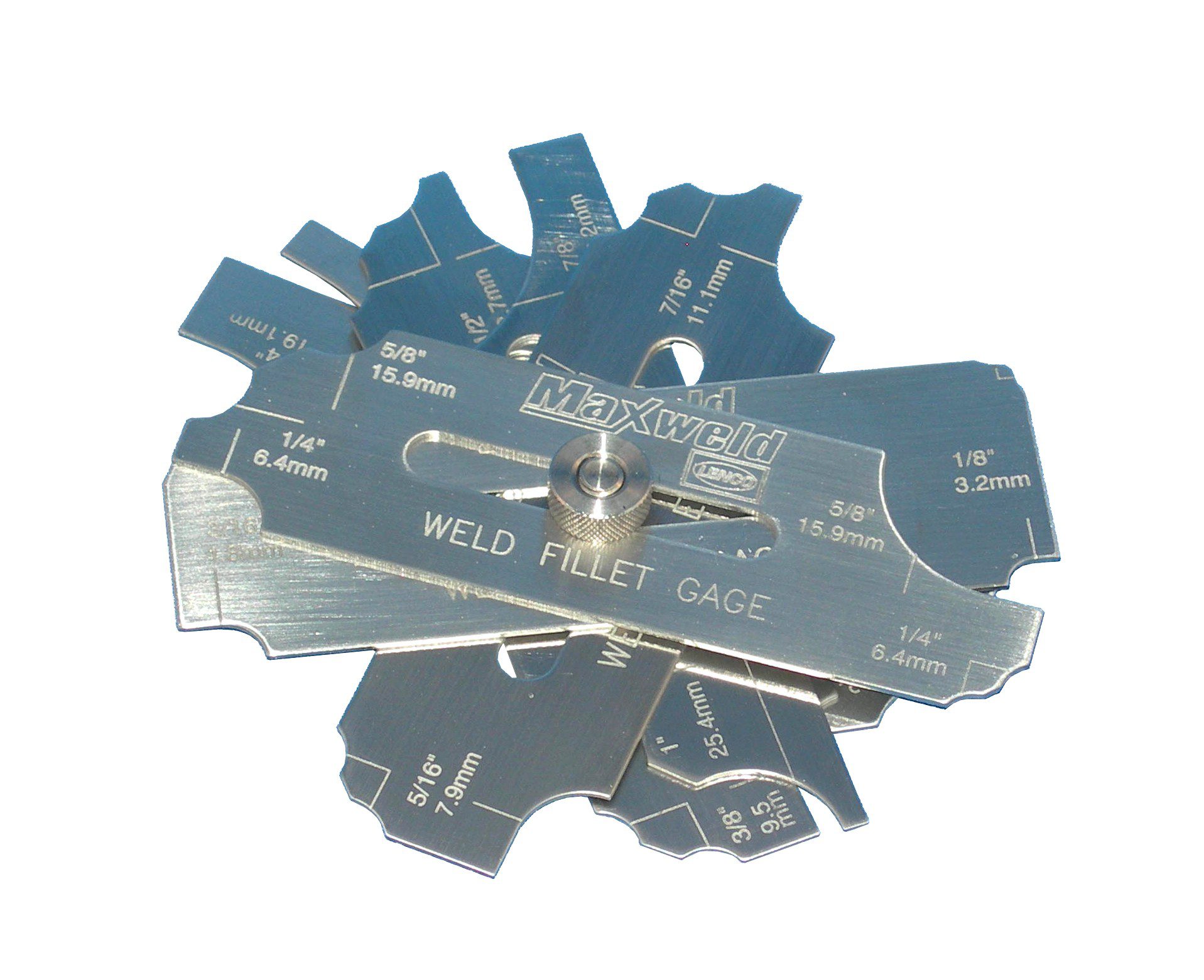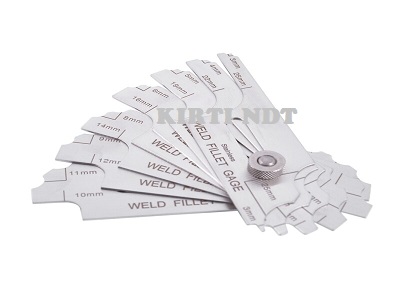Ingenious Strategies to Fillet Weld Examination and Testing: Enhancing Weld Top Quality and Compliance Criteria
In the world of welding, the quality and stability of fillet welds play a crucial duty in making certain the architectural soundness and reliability of various industrial components. With the constant drive for enhanced performance and conformity with rigid requirements, the expedition of cutting-edge strategies to fillet weld examination and testing has become necessary.
Advanced Non-Destructive Screening Techniques
Utilizing modern innovations, progressed non-destructive screening methods play a crucial role in ensuring the honesty and quality of fillet welds. These approaches, such as phased selection ultrasonic testing (PAUT) and magnetic fragment testing (MPT), offer thorough insights right into the weld's inner structure without causing any type of damages to the material. PAUT, for circumstances, utilizes several ultrasonic elements to evaluate the weld from numerous angles, giving a detailed visualization of prospective problems like lack of blend or fractures.
Similarly, MPT works in identifying surface-breaking issues by using an electromagnetic field and iron bits to the weld location. This method is especially beneficial for identifying gaps that may compromise the weld's toughness. By using these advanced non-destructive screening techniques, weld assessors can precisely evaluate the high quality of fillet welds, ensuring compliance with market criteria and laws. The ability to spot defects at an early stage not only improves weld top quality yet additionally prevents costly rework or failures in structural integrity, highlighting the significance of these ingenious screening methods in welding inspections.
Robotics and Automation in Examination

The assimilation of robotics and automation has actually reinvented the evaluation procedure for fillet welds, enhancing performance and precision in high quality analysis. Robotics supply accurate control and repeatability in examining welds, making sure consistent and reliable outcomes. Automated systems can be set to follow specific assessment paths, guaranteeing complete insurance coverage of welds and decreasing the risk of human error.
Robotic evaluation systems furnished with innovative sensing units can discover and gauge weld attributes with high precision, providing thorough data for analysis. These systems can recognize defects such as fractures, absence of fusion, and porosity, enabling prompt rehabilitative actions to be taken. Furthermore, robotics and automation permit for real-time data collection and evaluation, offering instant responses to operators and promoting fast decision-making procedures.
Additionally, making use of robotics and automation in fillet weld assessment improves general productivity by lowering inspection times and enhancing assessment throughput. By improving the evaluation process, producers can make sure weld high quality and compliance criteria are met effectively, eventually causing cost financial savings and boosted product top quality.
Using Artificial Knowledge for Evaluation
Expert system plays a pivotal role in improving the efficiency and precision of analysis in fillet weld evaluation processes. By utilizing the power of AI, examiners can enhance the analysis of weld high quality and conformity requirements, causing more exact and reliable results. AI formulas can rapidly refine huge amounts of data from weld inspections, spotting flaws or inconsistencies that might be testing to recognize with the naked eye. This innovative innovation enables real-time tracking of weld high quality, allowing for prompt corrective actions to be taken if any kind of issues are discovered.
Additionally, AI systems can gain from previous examination data, continually enhancing their capacity to identify prospective problems and inconsistencies in fillet welds. This flexible learning capacity enhances the overall quality assurance process, lowering the possibility of human error and ensuring that welds satisfy the required criteria. By integrating expert system right into fillet weld evaluation, markets can attain higher degrees of efficiency, consistency, and compliance in their assessment practices.
Portable Tools for On-Site Evaluation
Enhancing field evaluation effectiveness, the adoption of mobile devices revolutionizes on-site analysis procedures for fillet welds. These tools provide adaptability and comfort, permitting assessors to carry out thorough go to this web-site exams in various places, consisting of tough or remote atmospheres. Mobile tools such as ultrasonic testing gadgets, magnetic bit evaluation devices, and digital radiography systems give real-time information and high-resolution imaging capacities, enabling fast decision-making and immediate feedback on weld top quality.
One substantial advantage of portable tools is their capability to enhance evaluation treatments, minimizing downtime and improving overall productivity - Gauge Fillet Weld. Inspectors can easily carry these devices to various job websites, eliminating the demand for transporting heavy equipment or elements to off-site centers. In addition, the portability of these tools promotes cost-effectiveness by decreasing transportation expenditures and accelerating examination timelines
Moreover, the use of mobile tools for on-site assessment advertises proactive quality assurance measures, as assessors can without delay recognize and address any this article kind of potential welding flaws or inconsistencies. By including these ingenious modern technologies into on-site evaluation methods, welding professionals can ensure conformity with industry requirements and enhance weld top quality, ultimately causing improved structural honesty and safety and security in various welding applications.
Combination of Information Administration Equipment

Having actually optimized on-site assessment processes through the application of mobile tools, the next stage entails the seamless integration of information management systems to even more improve performance and data evaluation capacities in fillet weld assessment and testing. By integrating information management systems right into the assessment procedure, organizations can improve information collection, storage space, and analysis. This assimilation enables real-time monitoring of weld top quality, instant recognition of problems, and punctual decision-making to remedy any kind of problems that might develop throughout the assessment procedure.
Information management systems play a crucial role in systematizing evaluation data, assisting in easy gain access to for authorized personnel, and making sure information honesty and safety. Via the assimilation of these systems, inspectors can produce comprehensive records, track historic information for trend evaluation, and boost general procedure efficiency. The integration of information administration systems makes it possible for seamless communication between different stakeholders entailed in the examination procedure, cultivating partnership and enhancing general top quality control steps. Ultimately, the integration of information administration systems offers to raise the requirements of fillet weld evaluation and testing, making sure compliance with sector policies and boosting weld high quality.
Verdict
Finally, ingenious methods to fillet weld examination and more screening have substantially improved weld top quality and conformity standards. Advanced non-destructive testing methods, robotics, automation, expert system, portable devices, and information administration systems have transformed the way weld assessments are conducted. By using these technologies, sectors can make certain that welds satisfy the needed top quality requirements and regulations, eventually improving overall effectiveness and safety in welding procedures.

Having actually optimized on-site inspection processes through the utilization of mobile devices, the following phase involves the seamless integration of information administration systems to further boost effectiveness and data evaluation abilities in fillet weld evaluation and testing. Ultimately, the assimilation of data monitoring systems offers to elevate the requirements of fillet weld evaluation and testing, making certain conformity with industry guidelines and enhancing weld quality.
